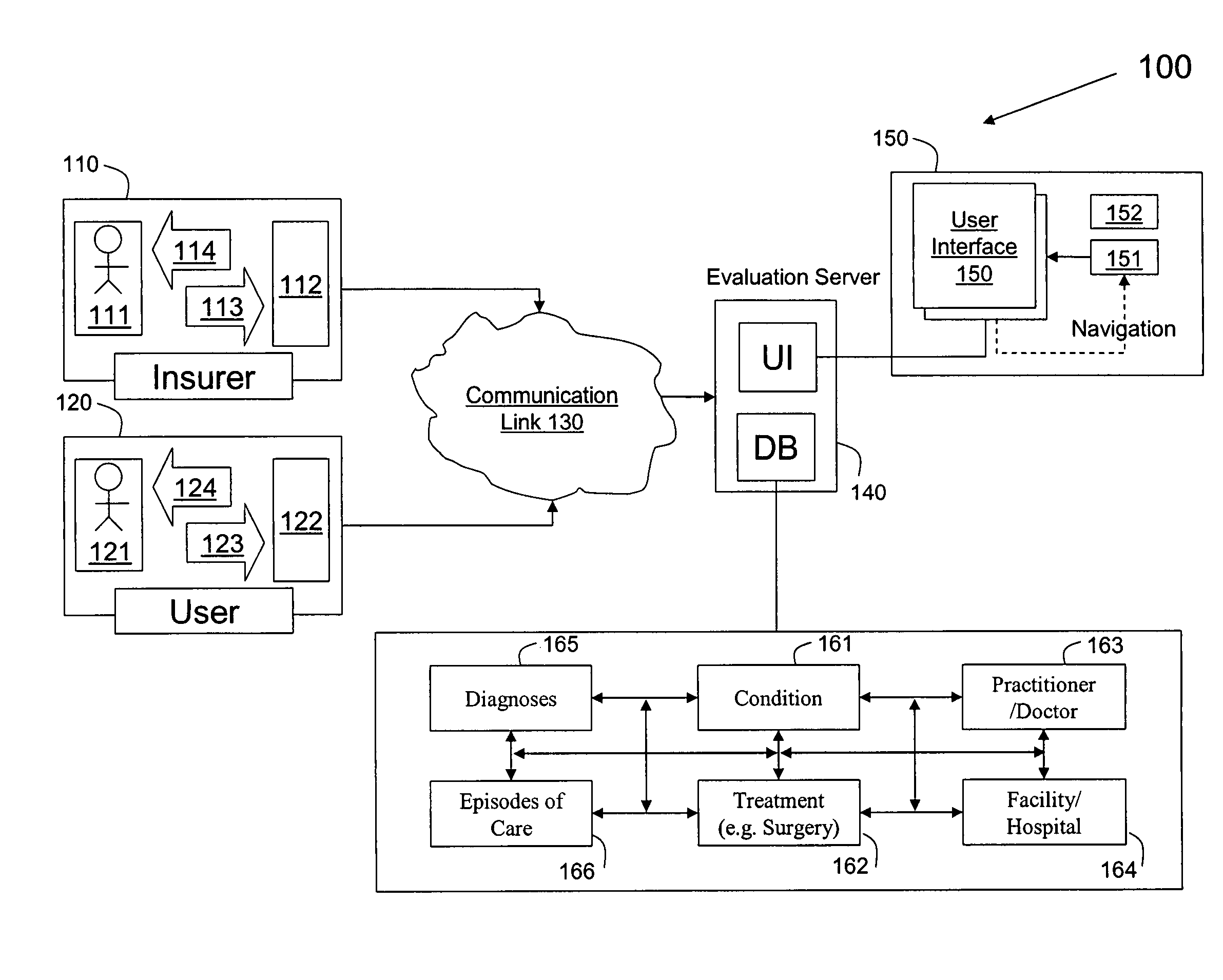Doctor performance evaluation tool for consumers
a performance evaluation and consumer technology, applied in the field of doctor performance evaluation tools, can solve the problems of not providing adequate or detailed information for selecting any particular medical provider based on individual provider quality or the user, and affecting the quality of individual providers. the effect of improving the national provision of healthcare services
- Summary
- Abstract
- Description
- Claims
- Application Information
AI Technical Summary
Benefits of technology
Problems solved by technology
Method used
Image
Examples
Embodiment Construction
[0075]Although preferred method steps, system elements, data structures, and the like, are described herein, those skilled in the art will recognize that these are intended to describe the invention in its broadest form, and are not intended to be limiting in any way. The invention is sufficiently broad to include other and further method steps, system elements, data structures, and the like. Those skilled in the art will recognize these as workable without undue experimentation or further invention, and as within the concept, scope, and spirit of the invention.
DEFINITIONS
[0076]The general meaning of each of these following terms is intended to be illustrative and in no way limiting.[0077]The term “user”, and the like, generally refers to any patient, any dependent, patient's agent (such as a parent or guardian), or other person directing healthcare services for the patient, or any insurer of the patient's healthcare costs, such as an employer, insurance company, or government agenc...
PUM
 Login to View More
Login to View More Abstract
Description
Claims
Application Information
 Login to View More
Login to View More - R&D
- Intellectual Property
- Life Sciences
- Materials
- Tech Scout
- Unparalleled Data Quality
- Higher Quality Content
- 60% Fewer Hallucinations
Browse by: Latest US Patents, China's latest patents, Technical Efficacy Thesaurus, Application Domain, Technology Topic, Popular Technical Reports.
© 2025 PatSnap. All rights reserved.Legal|Privacy policy|Modern Slavery Act Transparency Statement|Sitemap|About US| Contact US: help@patsnap.com



